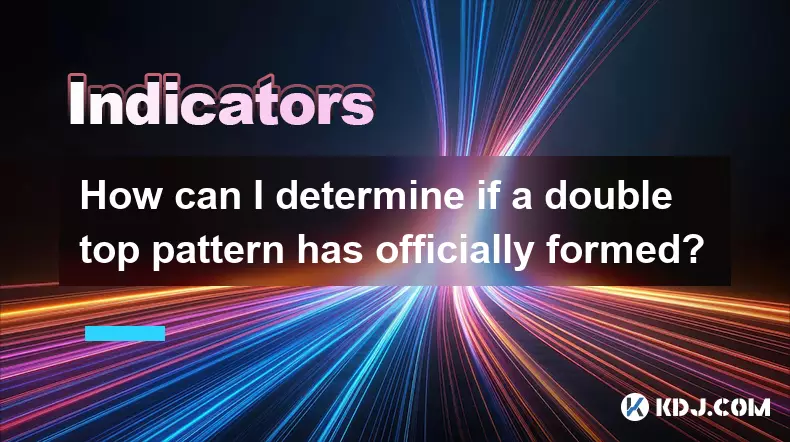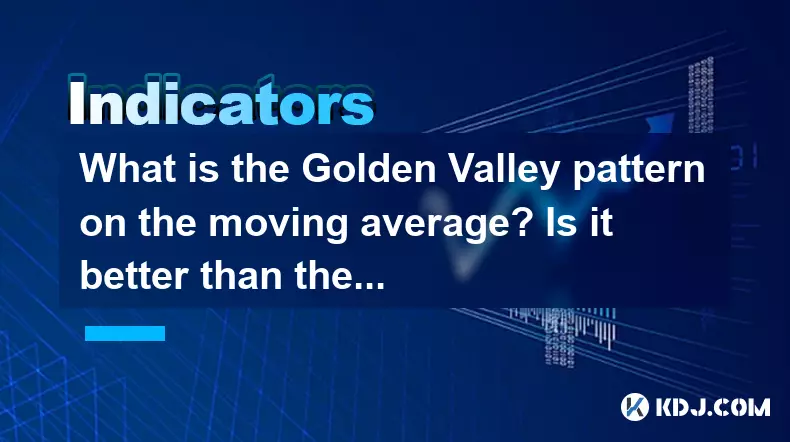-
 bitcoin
bitcoin $114320.977035 USD
-0.40% -
 ethereum
ethereum $4152.439985 USD
-1.75% -
 tether
tether $1.000111 USD
-0.04% -
 xrp
xrp $2.843037 USD
-1.63% -
 bnb
bnb $1013.349380 USD
-1.62% -
 solana
solana $208.362767 USD
-2.10% -
 usd-coin
usd-coin $0.999783 USD
0.00% -
 dogecoin
dogecoin $0.232559 USD
-1.00% -
 tron
tron $0.333491 USD
-1.09% -
 cardano
cardano $0.806310 USD
0.19% -
 hyperliquid
hyperliquid $45.023720 USD
-1.59% -
 ethena-usde
ethena-usde $1.000819 USD
-0.06% -
 chainlink
chainlink $21.241249 USD
-2.11% -
 avalanche
avalanche $30.035416 USD
-0.66% -
 stellar
stellar $0.364984 USD
-2.05%
How do I combine BOLL with CCI? How do I read the same and opposite signals of the two?
Combining Bollinger Bands and CCI helps traders confirm market trends and identify entry/exit points, enhancing trading strategies in cryptocurrency markets.
May 22, 2025 at 12:35 am

Combining the Bollinger Bands (BOLL) and the Commodity Channel Index (CCI) can provide traders with a robust method for analyzing market trends and identifying potential entry and exit points. Both indicators are popular in the cryptocurrency trading community for their ability to signal overbought or oversold conditions. In this article, we will explore how to integrate these two indicators, interpret their signals, and understand how they can complement each other or signal opposing market conditions.
Understanding Bollinger Bands (BOLL)
Bollinger Bands are a volatility indicator created by John Bollinger. They consist of a middle band, which is a simple moving average (SMA), typically set at 20 periods, and two outer bands that are standard deviations away from the middle band. The standard setting for the outer bands is two standard deviations.
- The middle band represents the average price over the selected period.
- The upper band is calculated as the middle band plus two standard deviations.
- The lower band is calculated as the middle band minus two standard deviations.
Bollinger Bands help traders identify the volatility and relative price levels in the market. When the bands are close together, it indicates low volatility, and when they are far apart, it indicates high volatility.
Understanding Commodity Channel Index (CCI)
The Commodity Channel Index (CCI) is an oscillator developed by Donald Lambert. It measures the deviation of the current price from its statistical average. The CCI typically oscillates above and below zero, with levels at +100 and -100 often used as thresholds for overbought and oversold conditions.
- A CCI value above +100 suggests that the price is overbought.
- A CCI value below -100 suggests that the price is oversold.
- Values between -100 and +100 are considered neutral.
The CCI is useful for identifying potential trend reversals and can help traders determine when a market might be due for a correction.
Combining BOLL and CCI
To effectively combine Bollinger Bands and the Commodity Channel Index, traders can use these indicators to confirm signals and enhance their trading strategies. Here’s how to set up and use these indicators together:
- Open your trading platform and navigate to the chart of the cryptocurrency you are analyzing.
- Add Bollinger Bands to the chart with the default settings (20 periods for the SMA and 2 standard deviations for the bands).
- Add the CCI indicator to the chart, typically with a period setting of 20, which aligns with the SMA used in the Bollinger Bands.
Once both indicators are set up, you can begin to interpret their signals in conjunction.
Reading Same Signals from BOLL and CCI
When BOLL and CCI provide the same signals, it can offer strong confirmation for a trader's decision. Here are some scenarios where the indicators align:
- Overbought Conditions: If the price touches or crosses the upper Bollinger Band and the CCI is above +100, it suggests that the market may be overbought. This could be a signal to consider selling or taking profits.
- Oversold Conditions: If the price touches or crosses the lower Bollinger Band and the CCI is below -100, it suggests that the market may be oversold. This could be a signal to consider buying or entering a long position.
- Trend Confirmation: If the price is trending above the middle Bollinger Band and the CCI is consistently above zero, it can confirm a strong uptrend. Conversely, if the price is trending below the middle Bollinger Band and the CCI is consistently below zero, it can confirm a strong downtrend.
Reading Opposite Signals from BOLL and CCI
Sometimes, BOLL and CCI may provide conflicting signals, which can be more challenging to interpret but can also offer valuable insights:
- Price at Upper Band but CCI below +100: If the price is touching the upper Bollinger Band but the CCI is not yet in overbought territory, it may suggest that the upward momentum is weakening. Traders might consider this a signal to be cautious about entering new long positions.
- Price at Lower Band but CCI above -100: If the price is touching the lower Bollinger Band but the CCI is not yet in oversold territory, it may suggest that the downward momentum is weakening. Traders might consider this a signal to be cautious about entering new short positions.
- Divergence: If the price makes a new high but the CCI does not, or if the price makes a new low but the CCI does not, it can indicate a potential reversal. This divergence can be confirmed by the price moving back within the Bollinger Bands.
Practical Example of Using BOLL and CCI
Let’s walk through a practical example of how a trader might use these indicators to make a trading decision:
Scenario: You are analyzing Bitcoin (BTC) and notice that the price has touched the upper Bollinger Band and the CCI is above +100. This suggests that BTC may be overbought.
Action: You decide to sell some of your BTC holdings to take profits, as both indicators are signaling an overbought condition.
Scenario: Later, the price of BTC drops and touches the lower Bollinger Band, but the CCI is still above -100. This suggests that while the price has reached a lower level, it is not yet in an oversold condition.
Action: You decide to wait for further confirmation before entering a new long position, as the CCI has not yet indicated an oversold market.
FAQs
Q: Can BOLL and CCI be used for all cryptocurrencies?A: Yes, BOLL and CCI can be applied to any cryptocurrency, but their effectiveness may vary depending on the specific market dynamics and volatility of each asset.
Q: How often should I check the BOLL and CCI indicators?A: The frequency of checking these indicators depends on your trading style. Day traders might check them multiple times a day, while swing traders might check them less frequently, perhaps daily or weekly.
Q: Are there other indicators that can be used alongside BOLL and CCI?A: Yes, many traders use additional indicators such as the Relative Strength Index (RSI), Moving Average Convergence Divergence (MACD), or volume indicators to further confirm their trading signals.
Q: Can these indicators be used for automated trading strategies?A: Yes, both BOLL and CCI can be integrated into automated trading algorithms, although careful backtesting and risk management are essential to ensure the strategy’s effectiveness.
Disclaimer:info@kdj.com
The information provided is not trading advice. kdj.com does not assume any responsibility for any investments made based on the information provided in this article. Cryptocurrencies are highly volatile and it is highly recommended that you invest with caution after thorough research!
If you believe that the content used on this website infringes your copyright, please contact us immediately (info@kdj.com) and we will delete it promptly.
- BlockDAG, DOGE, HYPE Sponsorship: Crypto Trends Shaping 2025
- 2025-10-01 00:25:13
- Deutsche Börse and Circle: A StableCoin Adoption Powerhouse in Europe
- 2025-10-01 00:25:13
- BlockDAG's Presale Buzz: Is It the Crypto to Watch in October 2025?
- 2025-10-01 00:30:13
- Bitcoin, Crypto, and IQ: When Genius Meets Digital Gold?
- 2025-10-01 00:30:13
- Stablecoins, American Innovation, and Wallet Tokens: The Next Frontier
- 2025-10-01 00:35:12
- NBU, Coins, and Crypto in Ukraine: A New Yorker's Take
- 2025-10-01 00:45:14
Related knowledge

What is a tower bottom candlestick pattern? Does it have a high success rate?
Sep 22,2025 at 07:18am
Tower Bottom Candlestick Pattern Explained1. The tower bottom candlestick pattern is a reversal formation that typically appears at the end of a downt...

What is a black hole pattern in the MACD indicator? Is it a cause for concern?
Sep 21,2025 at 06:54pm
Bitcoin's Role in Decentralized Finance1. Bitcoin remains the cornerstone of decentralized finance, serving as a benchmark for value and security acro...

How can I use the psychological line (PSY) to determine market sentiment?
Sep 17,2025 at 02:19pm
Understanding the Psychological Line (PSY) in Cryptocurrency TradingThe Psychological Line, commonly referred to as PSY, is a momentum oscillator used...

How can I determine if a double top pattern has officially formed?
Sep 21,2025 at 03:18am
Understanding the Structure of a Double Top Pattern1. A double top pattern consists of two distinct peaks that reach approximately the same price leve...

What is the Golden Valley pattern on the moving average? Is it better than the Silver Valley pattern?
Sep 21,2025 at 02:54pm
Understanding the Golden Valley Pattern in Moving Averages1. The Golden Valley pattern is a technical formation observed in cryptocurrency price chart...

What does a death cross of the RSI in the strong zone (above 50) mean?
Sep 17,2025 at 10:54pm
Understanding the Death Cross in RSI Context1. The term 'death cross' is traditionally associated with moving averages, where a short-term average cro...

What is a tower bottom candlestick pattern? Does it have a high success rate?
Sep 22,2025 at 07:18am
Tower Bottom Candlestick Pattern Explained1. The tower bottom candlestick pattern is a reversal formation that typically appears at the end of a downt...

What is a black hole pattern in the MACD indicator? Is it a cause for concern?
Sep 21,2025 at 06:54pm
Bitcoin's Role in Decentralized Finance1. Bitcoin remains the cornerstone of decentralized finance, serving as a benchmark for value and security acro...

How can I use the psychological line (PSY) to determine market sentiment?
Sep 17,2025 at 02:19pm
Understanding the Psychological Line (PSY) in Cryptocurrency TradingThe Psychological Line, commonly referred to as PSY, is a momentum oscillator used...

How can I determine if a double top pattern has officially formed?
Sep 21,2025 at 03:18am
Understanding the Structure of a Double Top Pattern1. A double top pattern consists of two distinct peaks that reach approximately the same price leve...

What is the Golden Valley pattern on the moving average? Is it better than the Silver Valley pattern?
Sep 21,2025 at 02:54pm
Understanding the Golden Valley Pattern in Moving Averages1. The Golden Valley pattern is a technical formation observed in cryptocurrency price chart...

What does a death cross of the RSI in the strong zone (above 50) mean?
Sep 17,2025 at 10:54pm
Understanding the Death Cross in RSI Context1. The term 'death cross' is traditionally associated with moving averages, where a short-term average cro...
See all articles










































































